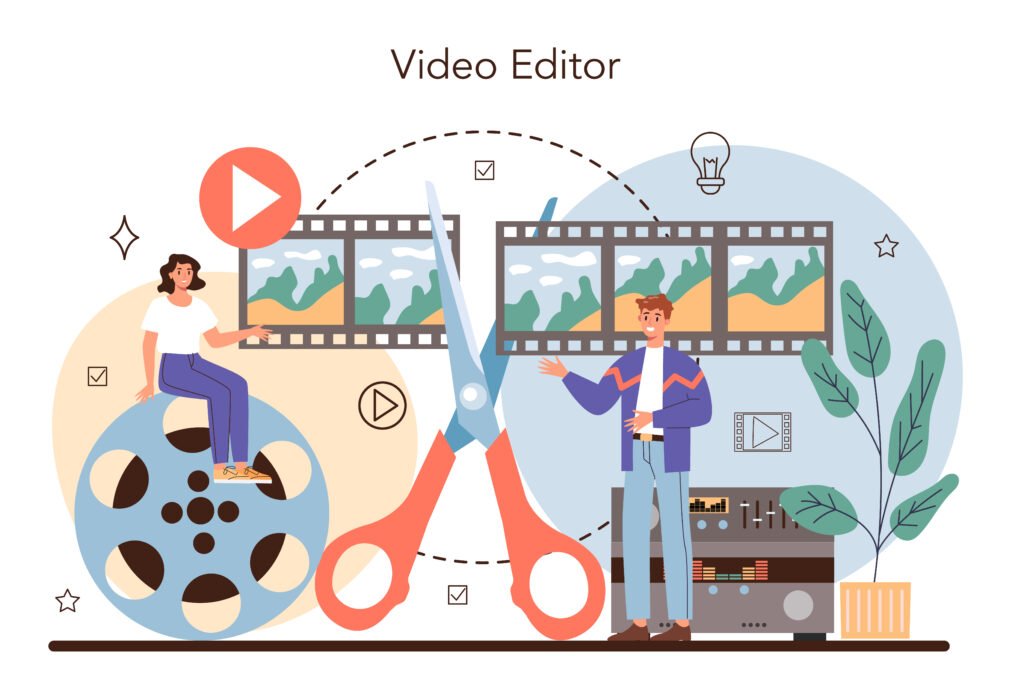Mastering Social Media Marketing: A Step-by-Step Guide
In the dynamic landscape of digital marketing, social media has emerged as a powerhouse for businesses to connect, engage, and convert their audience. Mastering social media marketing is crucial for businesses aiming to stay competitive and build a robust online presence. This step-by-step guide will take you through the key elements of creating and executing successful social media campaigns.
Understanding Your Audience
The foundation of any effective social media strategy begins with a deep understanding of your target audience. Identify their demographics, preferences, and behaviors. Utilize analytics tools to gather insights from existing platforms and conduct surveys to gather valuable feedback.


Setting Clear Objectives
Define clear and measurable objectives for your social media efforts. Whether it’s increasing brand awareness, driving website traffic, or generating leads, having specific goals will guide your strategy and help in evaluating success.
Choosing the Right Platforms
Not all social media platforms are created equal. Each platform caters to a unique audience and content style. Select platforms that align with your target audience and business goals. For instance, visual-centric businesses may find success on Instagram, while B2B companies might thrive on LinkedIn.

Crafting Engaging Content
Content is the heart of social media marketing. Develop a content strategy that resonates with your audience. Create a mix of visuals, videos, and written content. Incorporate storytelling to make your brand relatable and shareable.
Consistent Branding
Maintain a consistent brand identity across all social media platforms. Use the same logo, color palette, and messaging. Consistency builds brand recognition and fosters trust among your audience.
Leveraging Paid Advertising
While organic reach is essential, paid advertising can amplify your social media efforts. Utilize targeted advertising options to reach specific demographics and maximize the impact of your campaigns.
Monitoring and Analytics
Regularly monitor the performance of your social media efforts. Use analytics tools to track key metrics such as engagement, click-through rates, and conversion rates. Analyzing data will help you refine your strategy and optimize future campaigns.
Building Community and Engagement
Encourage community building by fostering meaningful interactions. Respond to comments, ask questions, and run polls. The more engaged your audience is, the more likely they are to become loyal customers.
Staying Updated with Trends
Social media is ever-evolving, with new features and trends emerging regularly. Stay updated with industry trends, algorithm changes, and new platform features. Experiment with new content formats to keep your strategy fresh.
Conclusion
Mastering social media marketing is an ongoing process that requires adaptability and creativity. By understanding your audience, setting clear objectives, and consistently delivering valuable content, you can build a robust social media presence that propels your business to new heights. Use this step-by-step guide as a roadmap to navigate the dynamic landscape of social media marketing and achieve lasting success.
Unveiling the Future: Web Design Trends 2024
Introduction
In the ever-evolving world of digital innovation, the realm of web design is continuously shaping the online experience. As we step into 2024, it’s time to explore the latest trends that are revolutionizing the way we interact with the virtual world. From immersive visuals to user-centric interfaces, the year 2024 promises to be a captivating journey for web designers and enthusiasts alike.
Chapter 1: The Rise of Immersive Experiences
The immersive experience takes center stage as web designers leverage advanced technologies like augmented reality (AR) and virtual reality (VR). Expect websites to engage users with visually stunning and interactive elements, blurring the lines between the digital and physical realms.
Chapter 2: Dark Mode Dominance
Dark mode continues to gain popularity, providing a sleek and modern alternative to the traditional light interface. Web designers are embracing dark color schemes not only for aesthetics but also for improved user comfort, reduced eye strain, and increased energy efficiency – a trend that’s here to stay.
Chapter 3: Minimalism with Microinteractions
Less is more in 2024, as designers opt for minimalist layouts enriched with microinteractions. These subtle animations and dynamic elements enhance user engagement, creating a seamless and enjoyable browsing experience. Simplicity meets sophistication as websites focus on essential content and intuitive navigation.
Chapter 4: Personalized User Experiences
Tailoring web experiences to individual preferences is a priority in 2024. Advanced AI algorithms analyze user behavior, providing personalized content, recommendations, and interfaces. This shift towards hyper-personalization ensures that each visitor feels a unique connection with the website, fostering brand loyalty.
Chapter 5: Sustainable Web Design
Sustainability takes center stage as the digital world acknowledges its environmental impact. Web designers are incorporating eco-friendly practices, optimizing performance for reduced energy consumption, and utilizing green hosting solutions. The intersection of aesthetics and sustainability defines the future of responsible web design.
Conclusion:
As we navigate through 2024, the world of web design unfolds with a blend of innovation, aesthetics, and user-centricity. The trends outlined here showcase the industry’s commitment to creating meaningful online experiences that captivate and resonate with users. Whether you’re a web designer, business owner, or digital enthusiast, embracing these trends will undoubtedly shape the way we interact with the digital landscape in the years to come. Stay tuned for the exciting journey ahead!
Decoding Digital Advertising Metrics: Moving Beyond Clicks for Success
Introduction
In the ever-evolving landscape of digital advertising, the journey from clicks to conversions involves deciphering crucial metrics that go beyond mere interaction. This comprehensive guide will delve into the key performance indicators (KPIs) that truly matter, unraveling the mysteries behind a successful digital advertising campaign.
Chapter 1: Setting the Stage
Delving deeper, we’ll focus on engagement metrics that gauge user interaction and interest. Average Engagement Rate, Bounce Rate, and Time-on-Page metrics will be dissected to unveil the story they tell about audience engagement and the effectiveness of your ad content.
Chapter 2: The Heart of Engagement
The first step is clearly identifying which goals you want to achieve. Get specific. Do you want to increase brand awareness? Are you all about locking in leads? Do you want to establish a strong network of influencers that can help you be discovered? How about pushing engagement on social media?
Chapter 3: Conversion Metrics Unveiled
The ultimate goal of any digital advertising campaign is conversions. This section will shed light on Conversion Rate, Cost per Conversion, and Return on Ad Spend (ROAS), offering valuable insights into the ROI of your advertising efforts.

Chapter 4: Quality Score and Ad Rank
Going beyond traditional metrics, we’ll explore the Quality Score and Ad Rank, essential components in platforms like Google Ads. Uncover the intricacies of these metrics and how they impact your ad’s visibility and cost-effectiveness.
Chapter 5: Beyond the Basics: Advanced Metrics
Elevating your understanding, we’ll explore advanced metrics such as Customer Acquisition Cost (CAC), Lifetime Value (LTV), and Attribution Models. These metrics provide a holistic view of your campaign’s impact on your business’s bottom line.
Conclusion
Armed with a comprehensive understanding of digital advertising metrics, you’ll be equipped to optimize your campaigns for success. Whether you’re focused on brand awareness, lead generation, or driving sales, this guide will empower you to navigate the digital advertising landscape with confidence.
Join us on this journey of discovery, where metrics transform from mere numbers into actionable insights, propelling your digital advertising endeavors to new heights.
Mastering SEO in 2024: Unveiling the Secrets for Top Website Rankings
Introduction: Navigating the SEO Landscape
In the dynamic world of digital marketing, the significance of Search Engine Optimization (SEO) cannot be overstated. As search engine algorithms continually evolve, understanding and mastering SEO is crucial for achieving and maintaining top rankings. In this guide, we’ll uncover the latest trends, algorithms, and strategies that will elevate your website’s visibility.
Chapter 1: Decoding SEO Trends in 2024
The journey begins by immersing ourselves in the latest trends that shape the SEO landscape this year. In 2024, SEO is not just about keywords; it’s a multifaceted strategy aligning with user behavior and technological advancements. One of the foremost trends is the emphasis on user experience (UX) optimization. Search engines prioritize websites that deliver seamless, enjoyable experiences, making UX optimization a critical factor for success.
Moreover, the era of mobile-first indexing is here to stay, reflecting the prevalence of mobile devices in online interactions. As users increasingly rely on voice search, optimizing content for this mode of interaction becomes imperative. By decoding these trends, you lay the groundwork for an SEO strategy that not only adapts to the current landscape but anticipates future shifts.


Chapter 2: Algorithms Unveiled: Understanding the Core Components
Delving into the heart of SEO, we explore the algorithms that govern search engine rankings. At the core lie components such as content relevance, backlinks, and technical SEO. Search engines deploy sophisticated algorithms to evaluate and rank websites based on these factors. Understanding the intricate dance between content and backlinks, coupled with technical SEO finesse, becomes paramount.
By peeling back the layers of these algorithms, we gain insights into how search engines determine the relevance and authority of a website. This knowledge becomes a compass for crafting a holistic SEO strategy that aligns with the nuances of search engine algorithms.
Chapter 3: Proven Strategies for SEO Success
Moving forward, we embark on a journey into the proven strategies that constitute the backbone of SEO success. Effective on-page optimization, meticulous keyword research, and the creation of high-quality content emerge as cornerstones. On-page optimization involves fine-tuning elements like meta tags, headings, and URL structures to signal relevance to search engines.
Keyword research, an art in itself, involves understanding user intent and weaving those insights into your content strategy. Quality content, enriched with relevant keywords, not only attracts search engines but keeps your audience engaged. These strategies form a dynamic trifecta that propels your website toward higher visibility and sustained success.
Chapter 4: Technical Mastery in SEO
Technical SEO is the unsung hero that ensures your website is not just visible but also accessible to search engines. This chapter explores the critical technical aspects that contribute to SEO success. From website speed optimization to mobile responsiveness, technical mastery lays the groundwork for a positive user experience.
Crawling and indexing, fundamental to search engine operations, depend on a well-structured website. By dissecting the intricacies of robots.txt, XML sitemaps, and canonical tags, you empower your website to communicate effectively with search engine bots. Technical SEO, often overlooked, is the backbone that supports your content and backlink strategies, making it an indispensable component of a robust SEO framework.
Chapter 5: Beyond Traditional SEO: Integrating AI and Voice Search
As we look to the future, the integration of artificial intelligence (AI) and the rise of voice search redefine the SEO landscape. AI algorithms refine search results, and understanding their impact is crucial for staying ahead. Voice search, driven by virtual assistants, demands a shift in keyword strategies towards more conversational and natural language.
By embracing AI-driven insights and optimizing for voice search, you position your website at the forefront of evolving search behavior. This chapter unveils the strategies that propel your SEO efforts beyond traditional boundaries, ensuring your online presence aligns seamlessly with emerging technologies.
Conclusion: Crafting Your SEO Triumph
In concluding our journey through the intricate realm of SEO, it’s essential to recognize that mastering SEO is an ongoing process. The landscape evolves, algorithms change, and user behavior adapts. However, armed with the knowledge gained from this guide, you possess the tools to navigate these changes with agility.
SEO success rests on the pillars of adaptation, relevance, and technical finesse. By decoding trends, understanding algorithms, implementing proven strategies, and embracing emerging technologies, you fortify your website against the ever-shifting currents of the digital landscape.
As you embark on your SEO journey, remember that it’s not merely about ranking high on search engines; it’s about creating a digital presence that resonates with your audience. By consistently optimizing your website and staying attuned to industry shifts, you position yourself for sustained visibility and success in the competitive digital arena.
The Art of Visual Storytelling: Enhancing Brands through Video Editing
Introduction
In the dynamic landscape of digital marketing, the art of visual storytelling has become a powerful tool for brands to connect with their audience. One key element in this narrative is the craft of video editing. Let’s delve into the significance of video editing and explore tips and industry insights to elevate your brand through compelling visual storytelling.
Importance of Video Editing in Digital Marketing
1. Captivating the Audience
Effective video editing helps convey the essence of a brand. Consistent visual elements, color schemes, and editing styles contribute to building a recognizable and memorable brand identity, fostering a deeper connection with the audience.

2. Conveying Brand Identity
Video editing transforms raw footage into a captivating visual story. Through seamless transitions, engaging effects, and precise editing, brands can grab and maintain the viewer’s attention, ensuring the message is not only heard but felt.
3. Enhancing Message Clarity
Editing allows marketers to refine and streamline their message. By eliminating unnecessary details and focusing on key points, brands can deliver a clear and concise message that resonates with their target audience.
Tips for Effective Video Editing
1. Understand Your Audience
Before diving into the editing process, understand your target audience. Tailor your editing style, tone, and content to align with their preferences and expectations.
2. Tell a Compelling Story
Craft a narrative that not only showcases your product or service but also tells a compelling story. Emotionally resonant stories have a lasting impact on viewers.

3. Pay Attention to Timing
Effective video editing is all about timing. Ensure that your edits, transitions, and cuts are well-timed to maintain a smooth flow and keep the audience engaged.
4. Embrace Creativity
Experiment with creative editing techniques. Incorporate innovative transitions, visual effects, and graphic overlays to add a touch of uniqueness to your videos.
Industry Insights: The Impact of Video Editing
1. Social Media Dominance
In an era dominated by social media, video content reigns supreme. Brands leveraging the power of well-edited videos witness higher engagement and shareability across platforms.
2. Brand Authenticity
Authenticity is paramount. Consumers appreciate brands that share genuine, well-edited content that reflects the brand’s personality and values.

3. Rise of Short-form Video
The popularity of short-form videos on platforms like TikTok and Instagram Reels underscores the importance of concise yet impactful video editing.
Conclusion
In the digital realm, the art of visual storytelling through video editing has evolved into a cornerstone of successful digital marketing strategies. By understanding its significance, implementing effective editing techniques, and staying attuned to industry trends, brands can harness the power of visual storytelling to enhance their online presence and captivate audiences.
Elevate your brand through the artistry of video editing, and embark on a journey to create compelling narratives that leave a lasting impression in the hearts and minds of your audience.
Navigating the Social Media Landscape: A Holistic Guide to Success
Introduction
As businesses continue to harness the power of social media, navigating this dynamic landscape requires a comprehensive understanding of strategies, platforms, and emerging trends. This guide serves as a holistic roadmap, unraveling the intricacies of social media marketing to help businesses thrive in the digital age.
Chapter 1: Crafting a Strategic Foundation
The journey begins with laying a solid strategic foundation. We’ll explore the importance of defining goals, identifying target audiences, and selecting the most suitable social media platforms. This chapter sets the stage for a purposeful and effective social media presence.
Chapter 2: Content is King
Dive into the heart of social media success by examining the role of content. From creating compelling visuals to crafting engaging copy, we’ll explore content creation strategies tailored for different platforms. Learn how to tell your brand’s story in a way that resonates with your audience.
Chapter 3: Mastering Platform Dynamics
Each social media platform has its nuances, and understanding them is crucial for success. Explore the dynamics of major platforms like Facebook, Instagram, Twitter, LinkedIn, and TikTok. Discover platform-specific strategies to optimize your presence and engage with your audience effectively.

Chapter 4: Building and Nurturing Communities
Community building is at the core of social media success. Uncover strategies for growing and nurturing a vibrant community around your brand. From fostering meaningful interactions to leveraging user-generated content, learn how to cultivate a loyal and engaged audience.
Chapter 5: Measuring Success with Metrics
No social media strategy is complete without monitoring performance. Delve into the world of social media metrics, including likes, shares, comments, and more. Understand how to measure the impact of your efforts and refine your strategy based on valuable insights.
Chapter 6: Staying Ahead of Trends
The social media landscape is ever-evolving, with trends shaping user behavior. Stay ahead of the curve by exploring emerging trends in social media marketing. From live video to ephemeral content, discover what’s on the horizon and how to leverage these trends for maximum impact.
Conclusion
Armed with a comprehensive understanding of social media marketing, businesses can navigate the landscape with confidence. This guide serves as a compass, helping you steer through the complexities of social media to build a powerful and influential online presence. Join us on this journey, where social media becomes more than a tool – it becomes a strategic powerhouse for your brand.
Graphic Design & 3D Modeling: Elevating Brand Identity in the Digital Age
Introduction
In the ever-evolving digital landscape, visual elements play a pivotal role in shaping brand identity. This comprehensive guide explores the synergy between graphic design and 3D modeling, unraveling the transformative impact these creative disciplines have on elevating brand presence in the digital age.
Chapter 1: The Power of Visual Storytelling
Delve into the art of visual storytelling and understand how graphic design and 3D modeling contribute to crafting compelling narratives. Explore the psychology behind visuals and how they evoke emotions, creating a lasting connection between brands and their audiences.
Chapter 2: Graphic Design Essentials
Unpack the fundamentals of graphic design, from color theory and typography to composition and layout. Learn how skilled graphic designers leverage these elements to create visually stunning materials that capture attention, convey messages, and leave a memorable impression.
Chapter 3: Navigating the 3D Modeling Realm
Embark on a journey into the world of 3D modeling, where creativity knows no bounds. Explore the applications of 3D modeling in diverse industries, from product design and architecture to gaming and virtual reality. Understand how this technology breathes life into static visuals.

Chapter 4: Harmonizing Graphic Design and 3D Modeling
Witness the seamless integration of graphic design and 3D modeling as they collaborate to produce visually striking and immersive experiences. Discover how brands leverage this synergy to design logos, marketing collateral, and even entire virtual environments.
Chapter 5: Building a Consistent Brand Aesthetic
Consistency is key in establishing a strong brand identity. Learn how graphic design and 3D modeling contribute to creating a cohesive and recognizable visual language across various touchpoints. Explore case studies of brands that have successfully forged a consistent aesthetic.
Chapter 6: Emerging Trends and Innovations
Stay ahead of the curve by exploring the latest trends and innovations in graphic design and 3D modeling. From augmented reality (AR) to interactive graphics, uncover the cutting-edge techniques that push the boundaries of visual communication in the digital age.
Conclusion:
As we navigate the digital age, the marriage of graphic design and 3D modeling emerges as a potent force in shaping brand identity. This guide serves as a compass for businesses seeking to harness the full potential of visual creativity. Join us in embracing the limitless possibilities that graphic design and 3D modeling offer as we elevate brand identity to unprecedented heights in the dynamic digital landscape.
Navigating the Digital Advertising Landscape: Dos and Don’ts
Introduction
In the dynamic world of digital advertising, staying ahead requires a keen understanding of the dos and don’ts that govern successful campaigns. This comprehensive guide serves as a roadmap for navigating the digital advertising landscape, offering insights into best practices and cautionary tales to enhance your campaign performance.
Chapter 1: Crafting Compelling Ad Copy
Explore the art of creating ad copy that captivates your audience. Uncover strategies for writing compelling headlines, persuasive ad descriptions, and enticing calls-to-action. Learn how to strike the right balance between creativity and clarity to convey your message effectively.
Chapter 2: Targeting Strategies for Precision
Delve into the intricacies of audience targeting to ensure your ads reach the right people. Discover the dos and don’ts of demographic targeting, behavioral targeting, and retargeting. Understand how data-driven insights empower you to refine your targeting strategies for optimal results.
Chapter 3: Visual Appeal in Ad Design
The visual component of digital advertising is paramount. Learn the dos and don’ts of designing eye-catching and conversion-focused display ads. Explore the significance of imagery, color schemes, and branding elements in creating visually appealing advertisements that resonate with your audience.
Chapter 4: Budgeting and Bid Management
Navigate the financial aspects of digital advertising with effective budgeting and bid management practices. Understand how to set realistic budgets, allocate resources wisely, and implement bidding strategies that maximize your return on investment. Avoid common budgeting pitfalls that can hinder campaign success.

Chapter 5: Ad Placement and Platforms
Examine the diverse landscape of digital advertising platforms and understand the dos and don’ts of ad placement. From social media channels to search engines, discover how to choose the right platforms for your goals and optimize your ad placement strategy for increased visibility.
Chapter 6: Measurement and Analytics
Measure the success of your digital advertising efforts with precision using analytics. Learn how to interpret key performance indicators (KPIs), track conversions, and optimize your campaigns based on data-driven insights. Avoid the pitfalls of misinterpreting analytics and make informed decisions for continuous improvement.
Conclusion:
As you navigate the complex terrain of digital advertising, mastering the dos and avoiding the don’ts is crucial for sustained success. This guide empowers marketers and advertisers to refine their strategies, enhance their campaigns, and achieve optimal results in the ever-evolving digital advertising landscape. Harness the power of effective practices and sidestep common pitfalls on your journey to digital advertising excellence.









